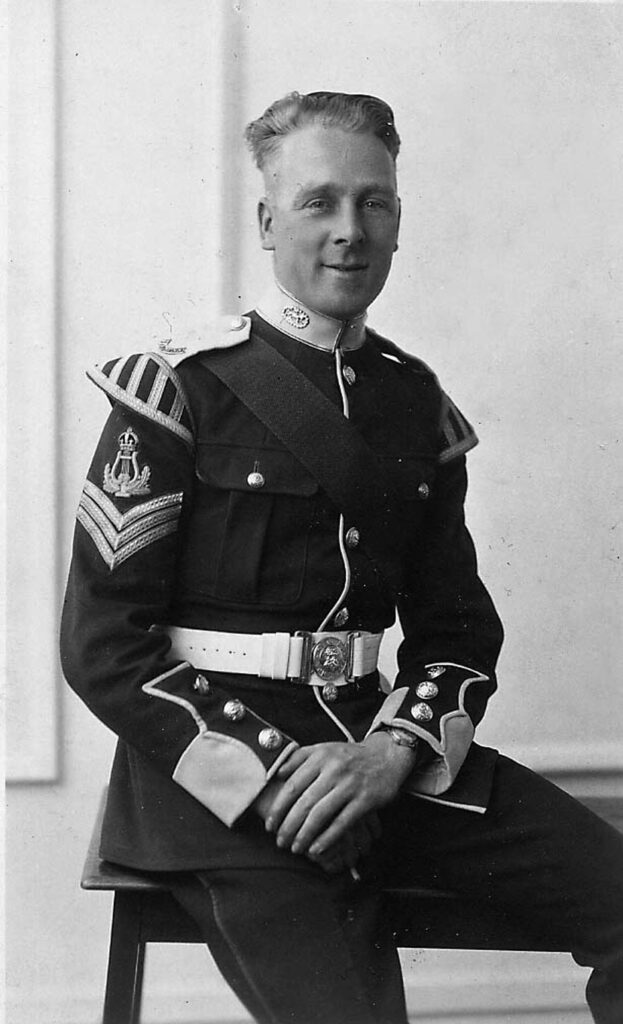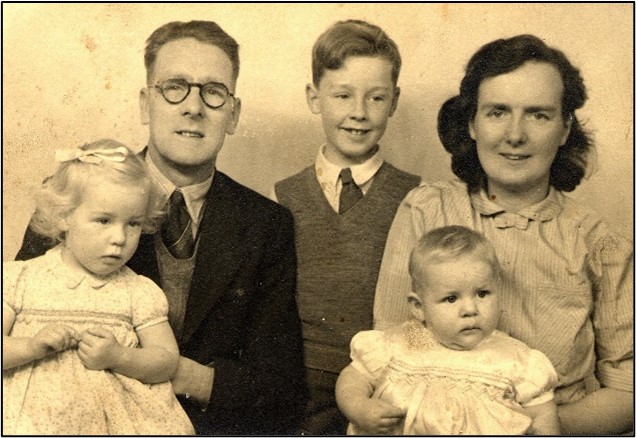
John Thomas Hewitt was born in York on 16th August 1905 and his family later moved to Darlington. It was a major railway centre at the time and, after leaving school, he undertook a railway apprenticeship as a boilermaker.
In 1927, following the General Strike of 1926, he joined the Leicestershire Regiment, his attestation form showing his occupation as boilermaker and musician. He served with the 2nd Battalion in Germany, Catterick and Londonderry and played clarinet and saxophone in the military band. In 1936 he was posted to India to join the 1st Battalion as their Band Sergeant. In India he served at Jubbulpore, Razmak (on the North-West Frontier) and at Agra. It was here that he met and married Joan Rothwell, who was in Agra working for an army major as his childrens’ nanny. They married in December 1940 but a few months later the battalion was ordered to Malaya and he had to leave his expectant wife behind in India.
By this time John Hewitt, known to his army colleagues as ‘Jerry’, was the Quartermaster Sergeant of ‘D’ Company, having left his post as Band Sergeant in 1938. However, whilst in Penang in 1941 his services were called upon to make up numbers in the dance band which regularly performed at various venues in Georgetown.
By December 1941 the whole of the battalion were at Jitra in northern Malaya preparing defences in anticipation of the Japanese invasion. As Quartermaster he would have been responsible for ensuring ‘D’ Company was kept supplied with food, clothing, weapons and ammunition. After the battalion’s merger with the 2nd East Surreys to form the British Battalion, he became Quartermaster Sergeant HQ Company and moved south, in advance of the front line, with B Echelon which contained the quartermaster and motor transport personnel. As such he would have reached Singapore ahead of the rest of the battalion who had to be evacuated from the south-west coast by the Royal Navy following action at Batu Pahat.
On 13th February 1942, shortly before the surrender of Singapore, he drew lots with the other B Echelon men to decide who should join the official evacuation party that was to leave Singapore that night. He was not one of the ‘lucky’ ones and so remained in Singapore to become a prisoner of war two days later.
With the thousands of other POWs he was initially held in the Changi POW camp and then, on 25th October 1942, he moved with X Party to Thailand to labour on the construction of the Thai-Burma railway. He was assigned to Group II and worked with Lt Col Morrison’s No 6 Battalion between Chungkai and Johnson’s Camp at the 244km mark. After the railway became operational he moved south to Kaorin camp where he was put to work in the Central Railway Workshops. In May 1944 he led a small group of POWs to Burma to build steel bridges over the Khon Khan and Myettaw rivers near Thanbaya and Anakwin. After a few months he returned to Kaorin where he remained until liberated, learning of his freedom on 16th August 1945 – his 40th birthday.
With her one year-old son Chris, Joan returned to England in October 1942 still not knowing whether her husband was alive or not. It was not until July 1944 that she received confirmation that he was a prisoner of war in Thailand. After repatriation in October 1945 Jerry was reunited with his wife and met his son, now four years old, for the first time. In Joan’s words, he returned from captivity a ‘changed’ man. Nevertheless, they went on to raise a happy family of four children.
Jerry remained in the army until 1949, based in Aldershot as the quartermaster to the Officer Cadet Training Unit at Mons Barracks. After discharge he joined the Royal Aircraft Establishment at Farnborough where he worked until his retirement in 1968. He died in May 1985, just short of his 80th birthday. His widow Joan lived on for a further seventeen years until her death in 2002.

L to R: Marion, ‘Jerry’, Chris, Ken and Joan.
Jerry & Joan’s fourth child, Jim, was born in 1952.
